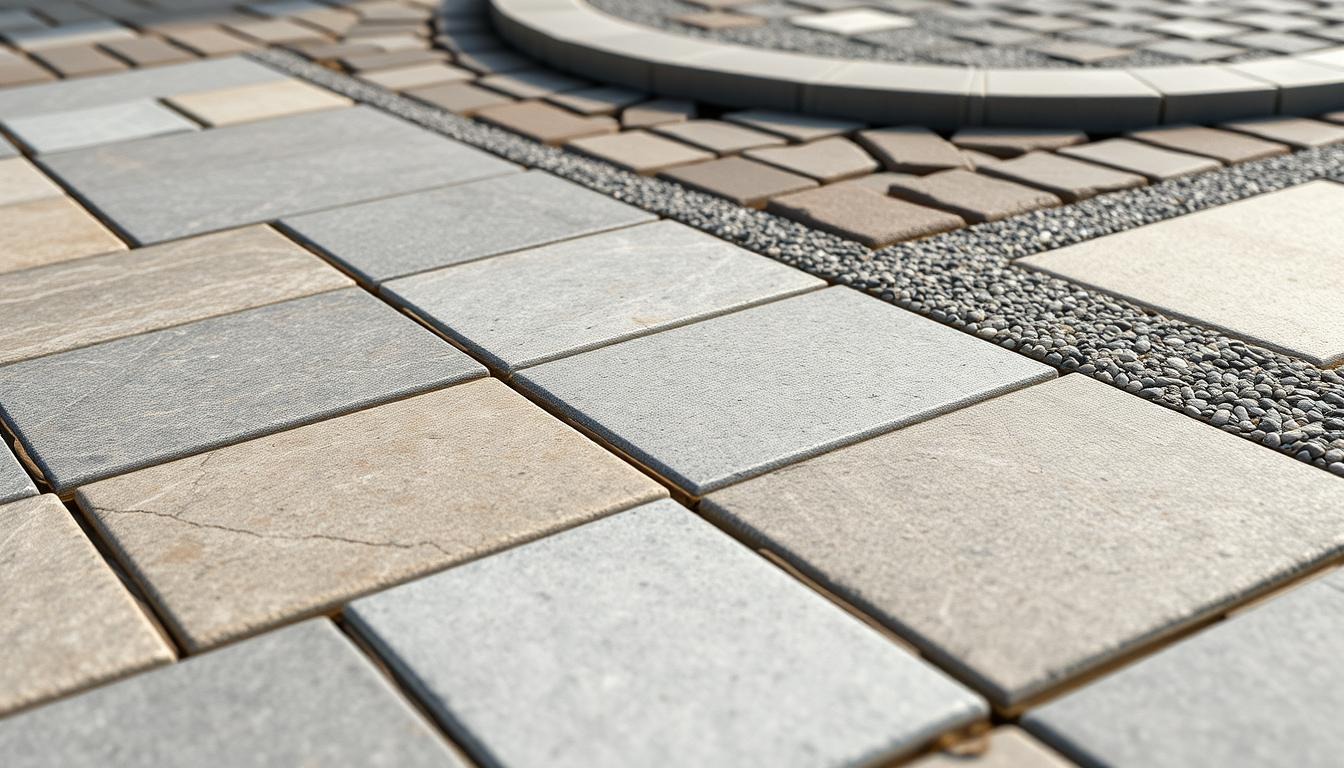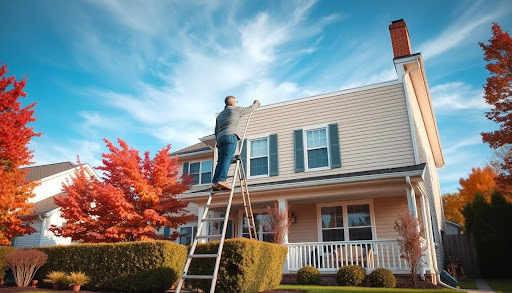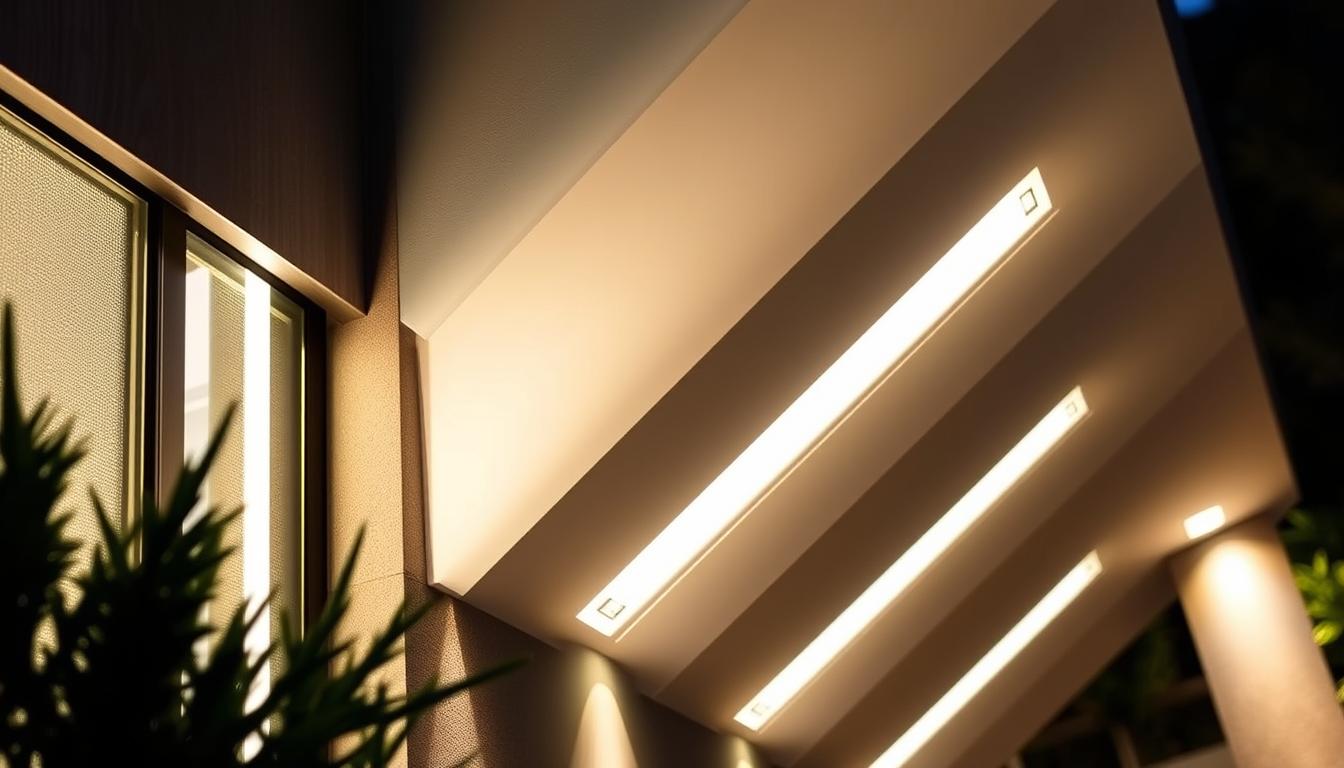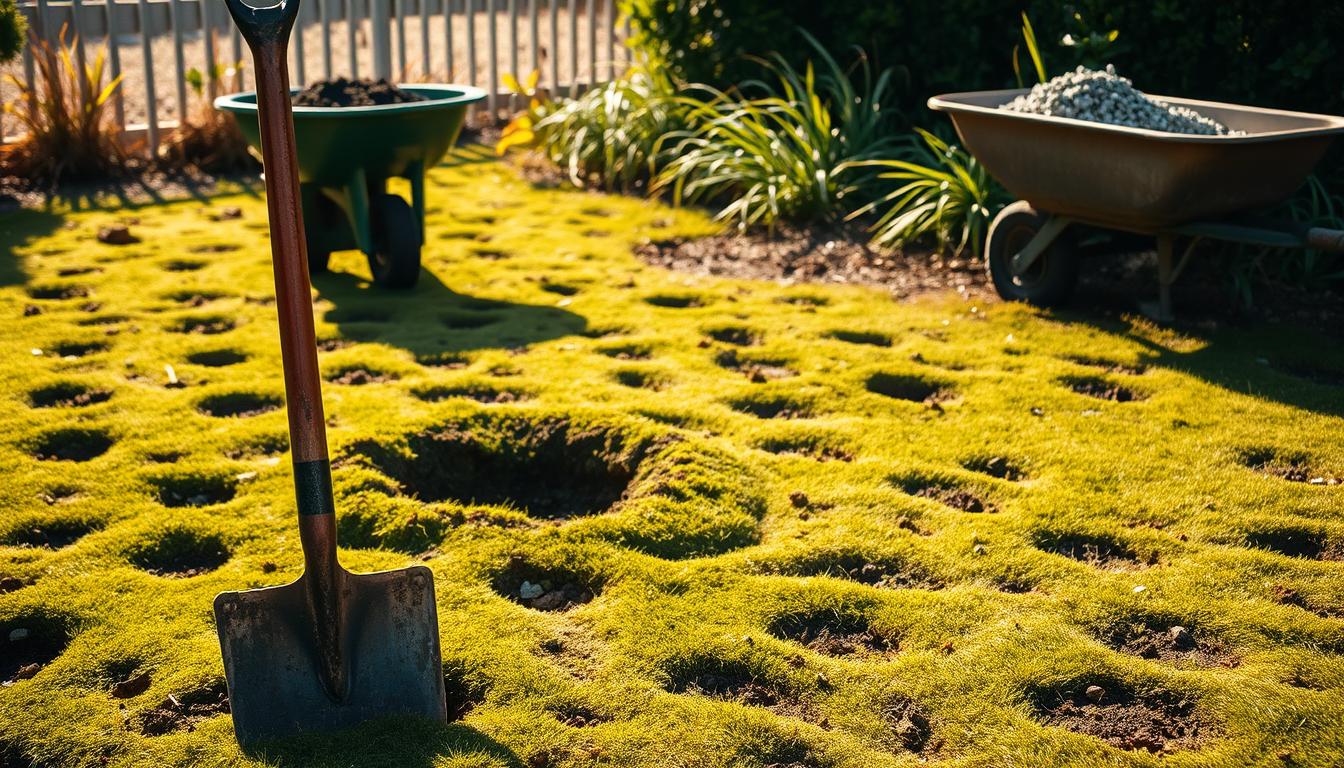Create a modern outdoor living space by initially mapping your area’s dimensions and segmenting it into functional zones for dining, lounging, and entertainment. Select contemporary furniture with clean lines and weather-resistant materials like powder-coated aluminum or FSC-certified teak. Layer your lighting with LED fixtures and smart controls, then integrate sustainable landscaping with drought-resistant plants and efficient irrigation. You’ll find each carefully planned element contributes to a sophisticated, eco-conscious outdoor sanctuary that enhances your lifestyle needs.
Define Your Space and Layout Plan
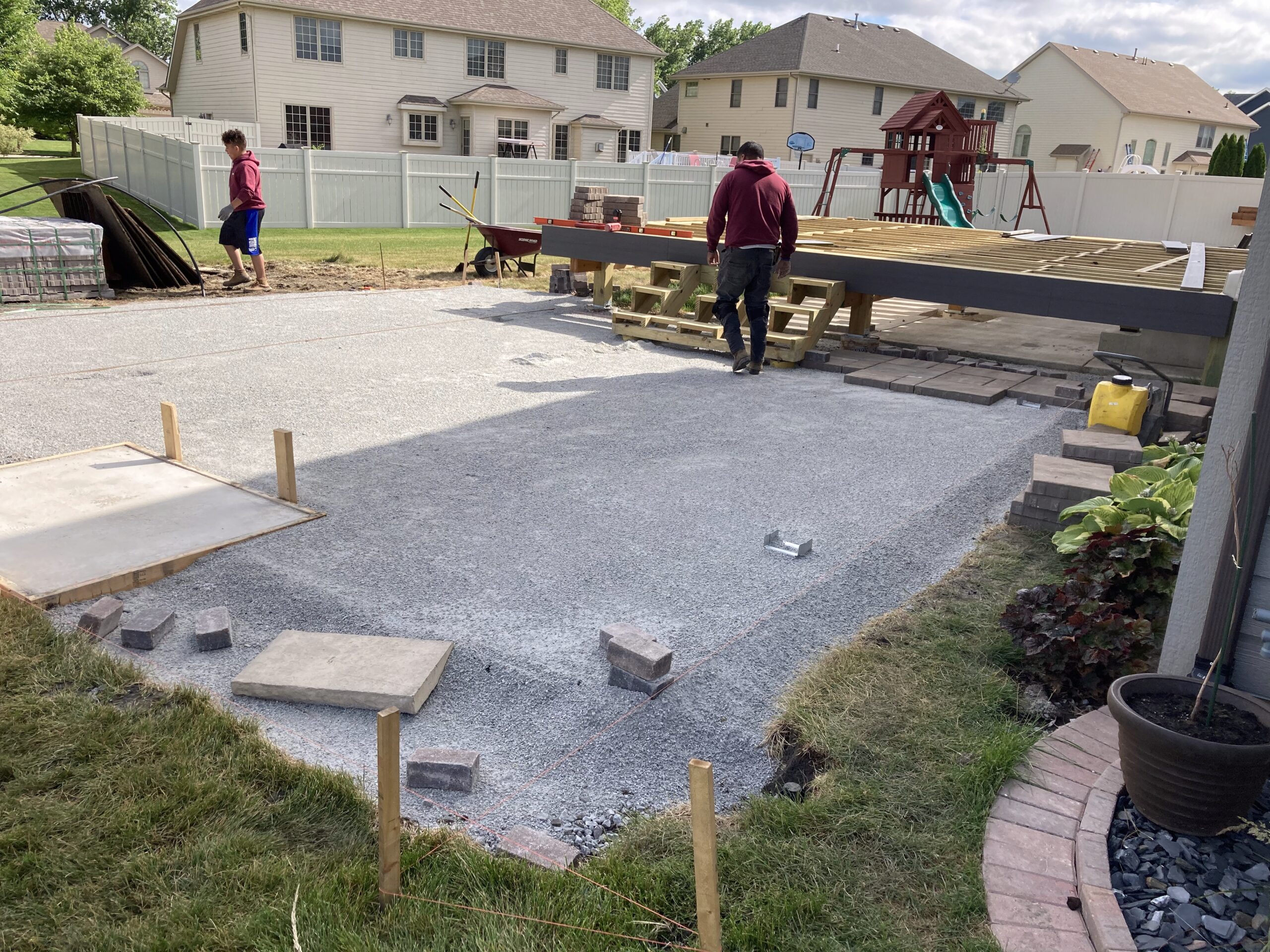
Three key factors drive successful outdoor living space design: available square footage, intended functionality, and natural site conditions. Begin by measuring your space dimensions accurately, accounting for existing structures, trees, and utilities. Map out potential layout options that optimize your available area while maintaining proper traffic flow.
Consider how you’ll segment the space into distinct zones dining, lounging, cooking, or entertainment areas. Factor in your region’s climate patterns, sun exposure, and prevailing winds when positioning these zones. You’ll want to identify natural focal points and views worth preserving or enhancing.
Document your site’s drainage patterns and soil composition, as these will impact your hardscaping and planting decisions. Create a scaled drawing that clearly delineates your proposed layout, ensuring all elements work harmoniously within your space’s constraints.
Select Modern Outdoor Furniture Pieces

With your layout plan established, the selection of contemporary outdoor furniture will define both the aesthetic and functional success of your space. Current outdoor trends favor clean lines, modular configurations, and multi-functional pieces that boost versatility while minimizing environmental impact.
Choose furniture materials that balance durability with sustainability. Opt for weather-resistant options like powder-coated aluminum, FSC-certified teak, or recycled polymers that withstand environmental stressors while maintaining their modern appeal. Consider incorporating low-maintenance composite materials or sustainable bamboo for accent pieces.
When selecting seating, prioritize deep-seated loungers and adjustable sectionals that adapt to your space’s requirements. Integrate sleek dining sets with stackable chairs to enhance storage, and select accent tables with built-in features like LED lighting or hidden storage compartments that improve functionality without compromising style.
Incorporate Contemporary Lighting Elements

Modern outdoor lighting transforms spaces from merely functional to truly enchanting while enhancing safety and sustainability. You’ll want to layer your lighting approach with strategic placement of solar fixtures and ambient lighting solutions that create depth and visual interest.
| Light Type | Purpose | Placement |
|---|---|---|
| LED Path Lights | Navigation | Along walkways |
| Solar Wall Sconces | Ambiance | Entry points |
| Smart Strip Lights | Accent | Under seating |
Select energy-efficient fixtures that complement your modern aesthetic while minimizing light pollution. Install motion sensors for security areas and dimming capabilities for entertaining spaces. Consider color temperature – opt for warm whites (2700-3000K) to create an inviting atmosphere. Position uplighting to highlight architectural features and downlighting to illuminate gathering areas. Integrate smart controls to automate your outdoor lighting system based on time and occupancy.
Add Stylish Weather-Resistant Materials
Modern materials have revolutionized outdoor design with their ability to withstand harsh weather while maintaining sophisticated aesthetics. You’ll find exceptional durability in sustainably harvested teak and all-weather wicker furniture, complemented by advanced performance fabrics that resist fading, staining, and mildew. Your outdoor space can achieve a seamless contemporary look with low-maintenance composite decking, which offers the warmth of wood grain without environmental impact or the need for annual refinishing.
Durable Teak and Wicker
When selecting materials for your outdoor living space, teak and all-weather wicker stand out as top choices that combine sophisticated aesthetics with exceptional durability. Teak’s natural oils provide built-in weather resistance, and with minimal teak maintenance – just an annual cleaning and sealing – it’ll develop a distinguished silver-gray patina over time. Choose Grade-A teak for ideal longevity and structural integrity.
Modern all-weather wicker, crafted from high-density polyethylene, offers superior wicker durability compared to traditional rattan. It won’t fade, crack, or deteriorate under intense sun exposure or rainfall. You’ll find these materials complement each other perfectly – teak’s solid presence pairs beautifully with wicker’s intricate weaving patterns. For eco-conscious design, look for sustainably harvested teak certified by the Forest Stewardship Council and recycled synthetic wicker options.
Waterproof Performance Fabrics
Beyond durable furniture frames, high-performance fabrics revolutionize outdoor living with their blend of luxurious comfort and weather-resistant properties. You’ll find advanced waterproof technology in materials like Sunbrella, Olefin, and solution-dyed acrylic, which resist fading, mold, and moisture while maintaining their soft, indoor-quality feel.
Select fabrics with UV-protective coatings that shield against harsh sunlight and prevent color deterioration. Modern performance textiles also incorporate quick-drying properties and antimicrobial treatments, reducing fabric maintenance requirements. When choosing outdoor cushions and pillows, look for options with moisture-wicking capabilities and breathable constructions that prevent water buildup.
For ideal longevity, opt for fabrics rated for at least 20,000 double rubs and treated with eco-friendly water repellents that won’t harm your garden’s ecosystem.
Sleek Composite Decking
A well-designed composite deck serves as the foundation for sophisticated outdoor living, combining advanced polymer technology with natural wood fibers. You’ll find today’s sustainable materials offer superior resistance to fading, staining, and scratching while maintaining their sleek appearance for decades.
| Feature | Traditional Wood | Modern Composite |
|---|---|---|
| Lifespan | 10-15 years | 25+ years |
| Maintenance | Annual staining | Simple cleaning |
| Eco-Impact | Tree harvesting | Recycled materials |
Current design trends favor clean lines and minimalist board patterns that create visual flow between indoor and outdoor spaces. Select boards with subtle grain patterns and contemporary edge designs that complement your home’s architecture. You’ll also benefit from hidden fastener systems that deliver a seamless surface, perfect for barefoot comfort and modern furniture placement.
Create Functional Zones and Flow
To enhance your outdoor space’s functionality, start by mapping distinct zones for cooking, dining, lounging, and gathering based on your lifestyle needs and the natural features of your property. You’ll want to establish clear visual separations between these zones using varied elevations, permeable pavers, or drought-resistant groundcover to guide movement and create spatial definition. Consider how people will naturally flow through the space, ensuring pathways connect key areas efficiently while maintaining a harmonious balance between active and quiet zones.
Define Activity Areas First
When planning your modern outdoor living space, start by mapping distinct functional zones that align with your lifestyle needs and daily activities. Consider how you’ll use each area throughout different seasons and times of day to enhance functionality.
| Activity Zone | Primary Function | Design Elements |
|---|---|---|
| Dining Area | Meals & Entertainment | Weather-resistant table, built-in seating |
| Lounge Space | Relaxation & Socializing | Modular furniture, shade structures |
| Cooking Zone | Food Preparation | Outdoor kitchen, prep surfaces |
| Garden Area | Growing & Connection | Raised beds, vertical gardens |
| Activity Space | Recreation & Exercise | Open layout, durable flooring |
These defined activity zones create natural shifts while maintaining distinct purposes. Position high-traffic areas for easy access and connect spaces using cohesive materials and thoughtful pathways. Consider sustainable materials and permeable surfaces to reduce environmental impact while enhancing your outdoor living potential.
Create Visual Transitions
Building on your defined activity zones, visual flow between spaces improves the entire outdoor experience. Create seamless shifts by implementing consistent color coordination throughout your landscaping and hardscaping elements. Use complementary plant selections and materials that guide the eye naturally from one zone to another.
Incorporate texture layering to define distinct areas while maintaining cohesion. Install permeable pavers that gradually shift from dining spaces to lounge areas, or integrate varying heights of native grasses to separate meditation zones from entertainment spaces. Consider using eco-friendly materials like recycled composite decking or sustainable bamboo screens as visual dividers. Add subtle lighting elements along pathways and between zones to maintain the flow after sunset, ensuring your outdoor space remains functional and visually connected throughout the day.
Plan Natural Traffic Patterns
Successful outdoor living spaces depend on intuitive traffic patterns that guide movement between functional zones. Map traffic flow between key areas like seating, dining, and cooking spaces to guarantee natural shifts and accessibility. You’ll want pathways that are at least 4 feet wide for comfortable navigation.
Consider the primary entry and exit points when planning outdoor pathways. Position high-traffic areas like dining spaces closer to your home’s access points, while creating quieter zones farther away. Use permeable materials like gravel or spaced pavers to define paths while supporting sustainable drainage. Strategically place lighting along walkways to improve safety and visual guidance after dark. Incorporate curves rather than straight lines to create a more organic flow that complements your surroundings’ natural features.
Install Smart Technology Features
To raise your outdoor living space into a sophisticated smart environment, integrate cutting-edge technology that boosts both functionality and convenience. Smart home integration lets you control multiple features from your mobile device, creating a seamless indoor-outdoor experience.
- Install weather-resistant smart lighting systems with motion sensors and automated scheduling to improve ambiance and security while reducing energy consumption
- Implement an outdoor automation system for irrigation, incorporating moisture sensors and weather data to optimize water usage
- Add weatherproof speakers with multi-zone audio control, allowing you to create distinct entertainment areas throughout your space
- Deploy Wi-Fi extenders and outdoor-rated power outlets strategically to guarantee consistent connectivity and power for all your smart devices while maintaining a clean, uncluttered aesthetic
Elevate With Modern Landscaping Design
Modern gardening serves as the perfect complement to your smart outdoor technology, creating a cohesive design that merges natural elements with contemporary aesthetics. Incorporate geometric patterns through strategic plant placement, using clean lines and minimalist arrangements to define your space. Select drought-resistant plants and native species that support local ecosystems while maintaining sleek garden aesthetics.
Implement sustainable practices by installing a drip irrigation system and using permeable pavers to manage water runoff. Create distinct zones with architectural plants like ornamental grasses and sculptural succulents. Add modern touches with steel planters, crushed stone pathways, and LED ground lighting. Consider vertical gardens or living walls to optimize space and introduce creative design elements that blur the boundaries between architecture and nature.
Frequently Asked Questions
How Much Does a Complete Modern Outdoor Living Space Typically Cost?
Your modern outdoor living space’s cost breakdown typically ranges from $15,000 to $75,000, depending on your design complexity and material choices. Budget considerations include: hardscaping ($5,000-$20,000), furniture ($2,000-$10,000), lighting ($1,000-$5,000), and sustainable features ($2,000-$15,000). You’ll also need to factor in design fees and permits. For eco-conscious builds using recycled materials and native plants, you can potentially reduce costs while maintaining design integrity.
Can I Install Outdoor Features Without Professional Help?
While you can DIY install certain outdoor features like container gardens, basic lighting, or simple furniture arrangements, it’s essential to evaluate each project’s complexity and safety requirements. You’ll need to check local building codes and permit requirements before addressing electrical work, gas lines, or structural elements. For complex installations involving water features, permanent structures, or extensive electrical work, you’ll want to prioritize outdoor feature safety by hiring licensed professionals.
What Permits Do I Need for Building an Outdoor Living Space?
You’ll need to check your local building codes and zoning laws before starting any outdoor construction. Contact your municipality’s planning department to understand specific requirements for structures like decks, pergolas, or outdoor kitchens. Don’t skip this step—you’ll likely need permits for electrical work, plumbing, or structural changes. Many areas also require environmental impact assessments and setback compliance. Keep in mind that permit requirements vary by location and project scope.
How Do I Protect Outdoor Furniture During Extreme Weather Conditions?
To protect your outdoor furniture, invest in high-quality, waterproof furniture covers that fit each piece precisely. You’ll want covers made from weather-resistant materials like polyester with UV protection and water-repellent coatings. When severe weather’s approaching, secure loose items and consider moving lighter pieces to a sheltered area. For long-term protection, you can apply protective sealants to wooden furniture and store cushions in weatherproof storage boxes when they’re not in use.
What Are Low-Maintenance Alternatives to Natural Grass in Modern Outdoor Spaces?
You’ll find numerous sophisticated alternatives to traditional lawns that require minimal upkeep. Premium artificial turf offers a year-round green solution with advanced drainage systems and UV-resistant fibers. For an eco-friendly approach, consider low-growing ground cover options like creeping thyme, sedum, or mondo grass. These plants naturally suppress weeds, thrive in diverse conditions, and create textural interest. Rock gardens with drought-resistant succulents also provide a contemporary, water-wise solution for your outdoor space.



